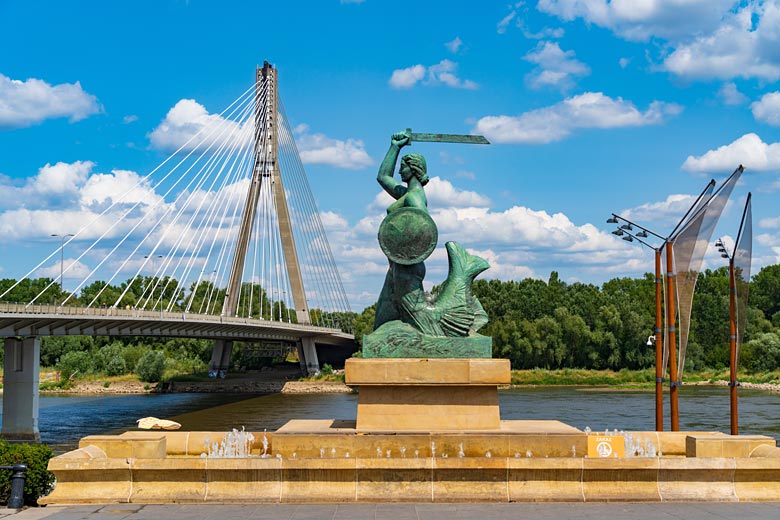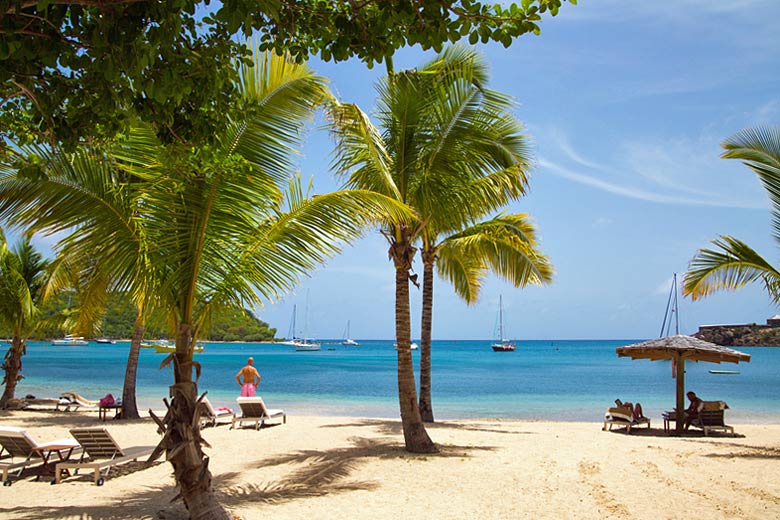7 ways to discover Djerba, Tunisia's paradise isle
Idyllic Djerba, just off the coast of Tunisia in the Gulf of Gabes, is the largest island in North Africa. It's a dreamy holiday destination with trademark white sandy beaches, the warm waters of the southern Mediterranean and swaying palms all part of the picture.
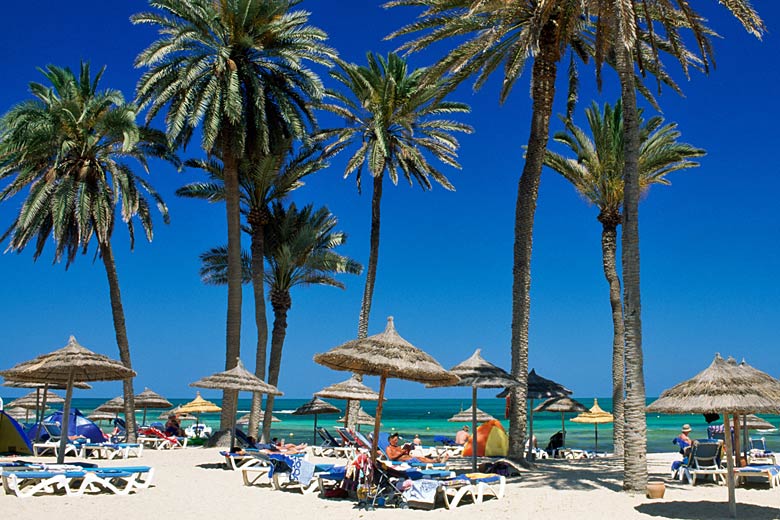
It's also a vibrant place to visit, home to communities and traditions, museums and sites of international religious significance. Add its long-held reputation for laidback living (in ancient Greek mythology, Djerba* was said to be where lotus-eaters idled), its affordability plus its year-round good weather, and it's easy to see why holidaymakers head for its sunny shores.
Getting to Tunisia: book great value escapes with easyJet holidays*, which now flies direct to Djerba from London Luton and Manchester.
Explore Houmt Souk
The island's main town is the busy fishing port of Houmt Souk on Djerba's north coast. Founded by the Romans, it's seen the Spanish, the Ottomans, the French and others who've left their mark everywhere from the architecture to the demographics.
There's an easy-going bustle here as locals and visitors mingle in the cafés and souk stacked high with baskets and brightly-painted pottery. Dazzling white houses with smart blue doors gleam in the sunshine, while in the market you'll find all shapes of fruit and vegetables alongside freshly caught fish.
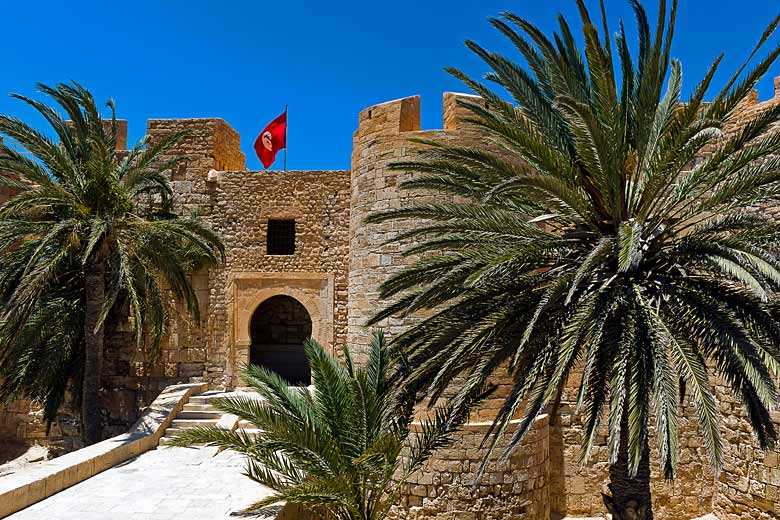
The harbour is also where the town's themed pirate ships depart on trips to the white sand bar of Flamingo Island. Lunch, entertainment, time to swim and relax, and, yes, even flamingoes included (in the island's natural reserve, of course).
For a touch of history, head to the imposing Borj El Kebir, also known as the Ghazi Mustapha Tower, the island's best-preserved fortress with an accompanying museum and mausoleum.
Venture inside this well-preserved fort on a site first utilised by the Romans. The majority of what's there today is Ottoman, dating from the 16th century, with renovations that occurred in the early 20th century. Walk around the walls, taking in the huge bastions and sea views.
Meanwhile, over in the Djerba Traditional Heritage Museum you'll get an insight into what daily life has been like for the island's inhabitants over the centuries.
Bite into a brik
Prepare to meet your new favourite snack: the brik. A Tunisian staple, this scrumptious triangular parcel of flaky filo pastry traditionally has a whole egg at its centre and is packed tight with tuna, seasoned with herbs and spices before being lightly deep-fried. It's divine, day or night and best washed down with tart Tunisian lemonade.
Visit the village of street art
Close to the centre of the island, you'll find the open-air gallery of Djerbahood. This innovative project began in 2014 when founder Mehdi Ben Cheikh suggested turning the village of Erriadh into a destination for international street artists.
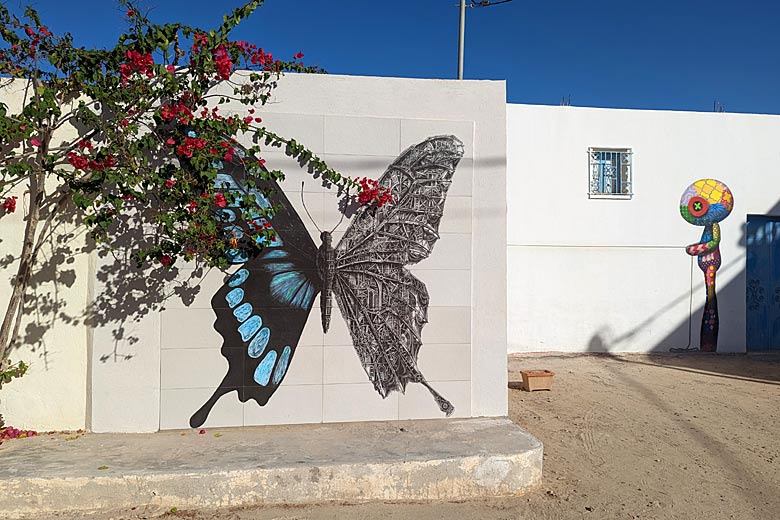
The scheme has seen some 200 works of art adorn buildings throughout the neighbourhood, first in 2014 and then refreshed again in 2022. It's a curious walk as you follow your nose down one alleyway and then the next to see what creations you'll spy along the way.
The artworks range from political and social statements to traditional and contemporary pieces reflecting nature, people, tilework, calligraphy and love, all beautifully displayed on walls and buildings by artists from 30 different nationalities.
The best way to explore Djerbahood is to dive right in and take the twists and turns, remembering to look up. Locals here are used to visitors nosing around their village and there are a few shops and cafés that more than welcome art lovers.
Where to stay: find peace and comfort at the stylish beachside Iberostar Mehari Djerba*. Relax on the beach by the bar, tuck into the vast array of options from breakfast to dinner in the restaurant and let kids enjoy the slides and mini-flumes in the dedicated pool.
Find peace in the synagogue
Djerba has a strong Jewish heritage, with a sizeable Jewish population that has existed peacefully alongside Muslims, Christians and Berbers for millennia. Interestingly, Djerba's Jews have evolved a distinctive Djerban variation of Judaism with traditions of the island woven into Jewish practices.
The El Ghriba Synagogue is one of the island's most revered sites and a major place of pilgrimage worldwide. It's said to be the oldest in Tunisia; some suggest in all of Africa.
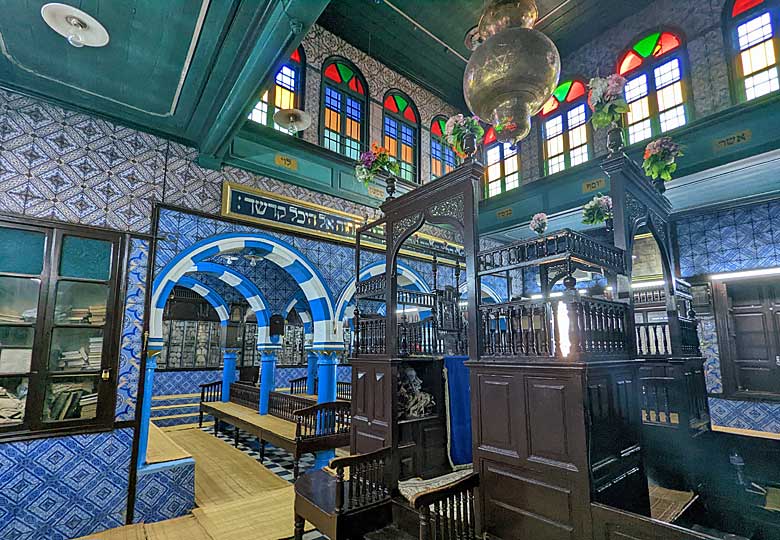
Although its origin is somewhat shrouded in myth, it's believed that while the current building dates from the 19th century, there has been a synagogue on this site since the 6th century BCE, meaning that it has been a place of worship for over 2,000 years.
Step inside the cool covered hall to see the bright blue and white archways along with the detailed, finely painted tilework featuring geometric patterns and flowers. Take a seat, enjoy the calm and admire the craftsmanship on display everywhere from the hand-painted tiles to the colourful windows and filigree lanterns.
Don't miss the opportunity to glimpse the courtyard where rooms are reserved for pilgrims. Wraps and appropriate headwear are provided for both men and women.
Indulge your pottery habit
Thanks to the Phoenicians, pottery has long been big business in Tunisia, Djerba especially owing to its clay-rich soil.
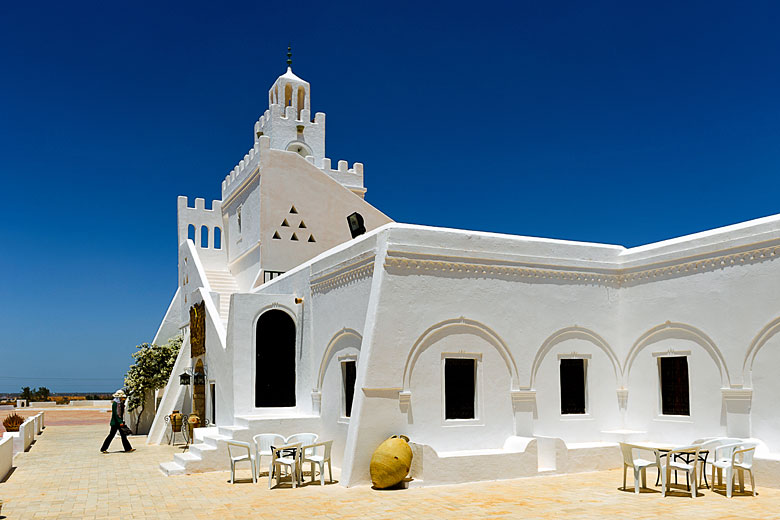
The island's southern village of Guellala emerged as the centre for pottery and ceramic production and, for a time, there were hundreds of small workshops here. Today, a number of workshops remain as well as plenty of places to buy beautiful handmade souvenirs.
There's also the Guellala Museum, which sports an impressive collection of contemporary African art, and the Djerba Guellala Museum, which details traditional Djerban culture in everything from bread and pottery-making to weaving, music and folklore.
If you're there at sunset, make for the coast at nearby Mosque Yati, where you won't be the only one there to watch the neon orange sun sink into the sea.
See very hungry crocs
An interesting mix of tradition and modernity, education and entertainment is on offer at Parc Djerba Explore. A complex built around a village, there's a telling mix of architectural styles and cultural attractions such as the Lalla Hadria Museum, as well as cafés and a select few local boutiques.
The star, and arguably most surprising aspect, is the crocodile park, said to be the largest in the Mediterranean, home to some 400 crocs. Walk across the raised walkways to see the giant reptiles lolling in the sun below in a well-kept enclosure.
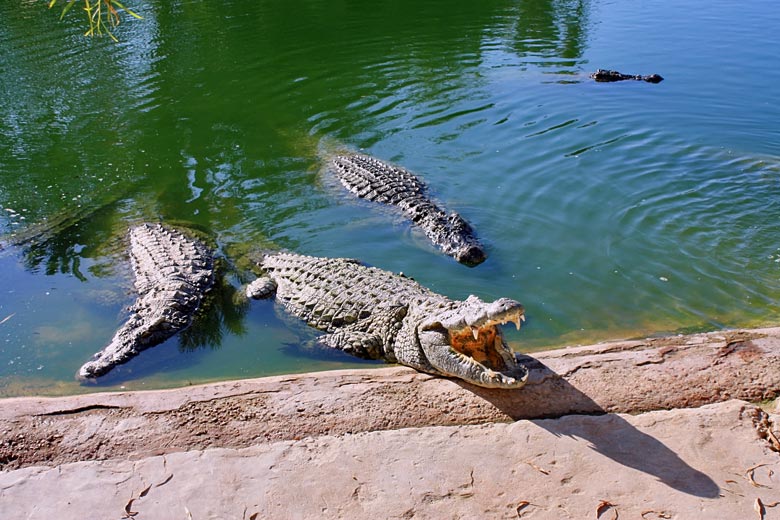
The park claims to be protecting the species of Nile crocodile with various different areas for the creatures to explore. Go at feeding time to see the super-powerful crocs in action.
Voyage to the mainland
There's rarely a better way to travel than by ferry, and Djerba's location just off Tunisia's east coast in the Gulf of Gabes makes it the perfect place from which to sail the short distance across the water to the mainland.
Ferries depart every hour from Ajim in the southwest of the island for the port of Jorf, a short 20-minute cruise away. The small car and passenger ferry is a sublime way to say goodbye to the island, be it for a day or longer, sometimes serving up flamingoes and the occasional passing dolphin as you go.
From Jorf, the country's attractions open up. Whether you're driving or have arranged for a driver to meet you, you could visit the troglodyte houses of Matmata, famous for their use in the original Star Wars franchise, the great salt lake of Chott el Djerid complete with roaming camels, and gateway to the Sahara, Tozeur with its lively market and huge palmeraies (date palm plantations).
Weather in Djerba
| Jan | Feb | Mar | Apr | May | Jun | Jul | Aug | Sep | Oct | Nov | Dec | |
|---|---|---|---|---|---|---|---|---|---|---|---|---|
| Maximum daytime temperature °C |  16 16 |
 18 18 |
 20 20 |
 22 22 |
 26 26 |
 29 29 |
 32 32 |
 32 32 |
 30 30 |
 26 26 |
 22 22 |
 18 18 |
| Hours of sunshine (daily) | ||||||||||||
| Days with some rainfall |  4 4 |
 4 4 |
 3 3 |
 3 3 |
 2 2 |
 1 1 |
 1 1 |
 1 1 |
 2 2 |
 4 4 |
 4 4 |
 4 4 |
| Sea temperature °C |  15 15 |
 14 14 |
 15 15 |
 17 17 |
 20 20 |
 23 23 |
 26 26 |
 28 28 |
 27 27 |
 25 25 |
 22 22 |
 18 18 |
The above guide shows the weather in Houmt Souk. Find out more about conditions across the country in our complete guide to the weather in Tunisia.
Ready to discover Djerba? Check out the latest offers on breaks with easyJet holidays to bag your great value escape to the sun today.
More about Djerba
- Overview
- Best time to visit
- Weather by month
- 5-day weather forecast
- Destinations
- Travel advice
- Deals & discounts
Djerba by month
Jan Feb Mar Apr May Jun Jul Aug Sep Oct Nov Dec
Explore holidays in the sun for less
- Beach holidays
- Family holidays
- City breaks
- Summer holidays
- Winter sun holidays
- Holiday offers
- Top travel brands
- Airlines & flights
- Discount hotels
- Airport parking deals
- TUI
- Jet2holidays
- easyJet holidays
- Love Holidays
- January sales
Airport parking
- Manchester Airport
- Stansted Airport
- Bristol Airport
- Luton Airport
- Birmingham Airport
- Edinburgh Airport
- Gatwick Airport
- Glasgow Airport
- Newcastle Airport
Airport lounges
- Manchester Airport
- Birmingham Airport
- Bristol Airport
- Edinburgh Airport
- Glasgow Airport
- Heathrow Airport
- Newcastle Airport
- Stansted Airport
- Gatwick Airport
Be inspired
Get your weekly fix of holiday inspiration from some of the world's best travel writers plus save on your next trip with the latest exclusive offers
We promise not to share your details
















